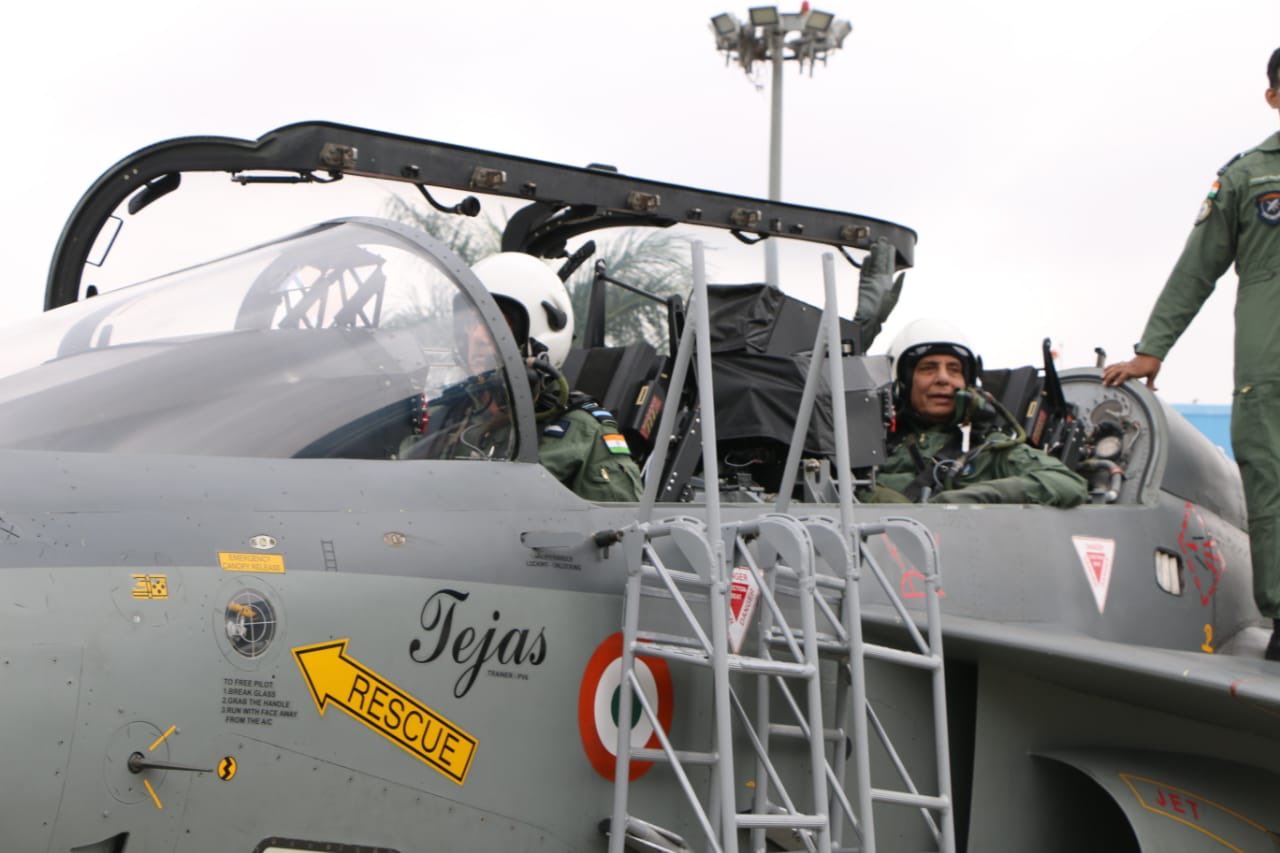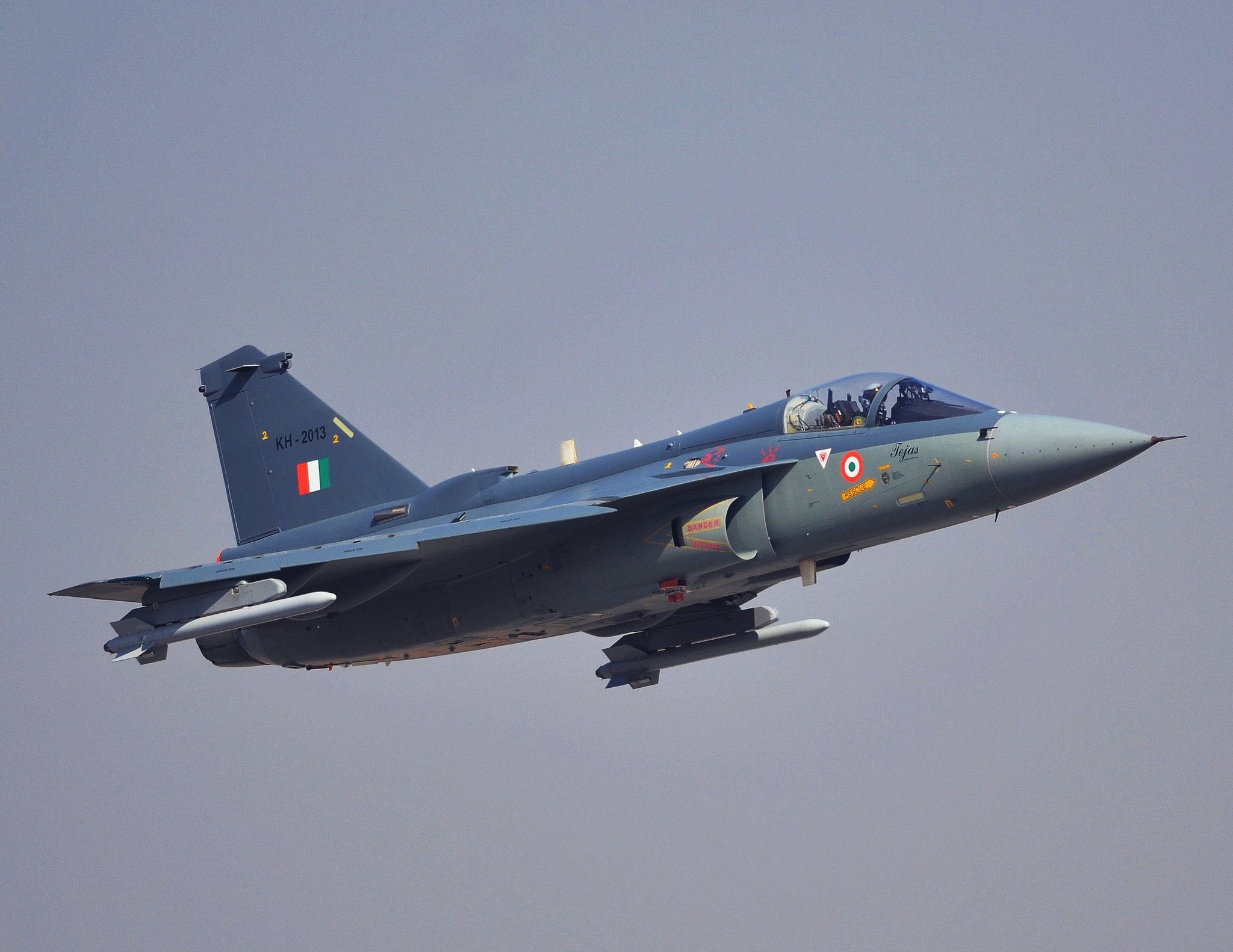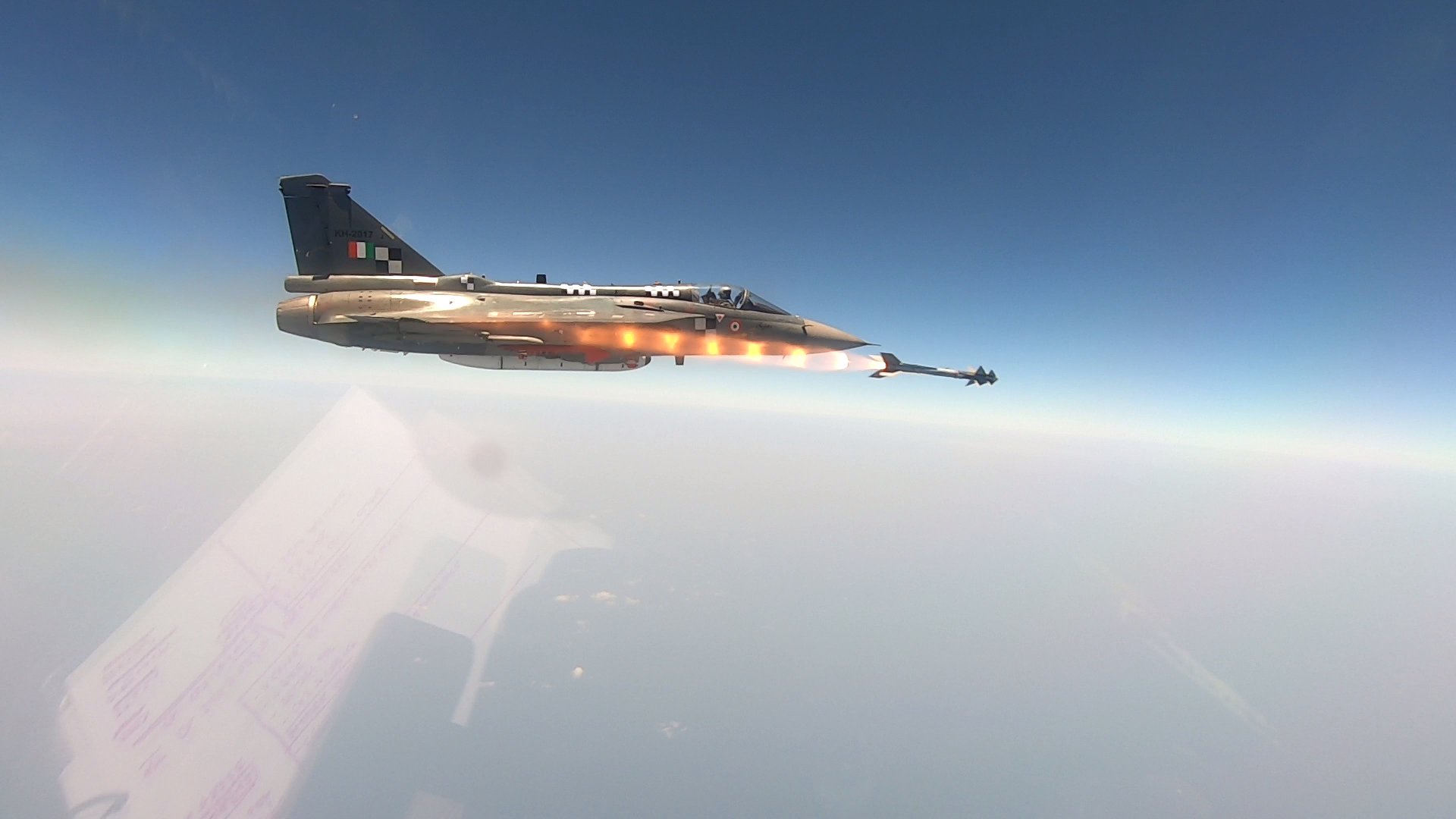India is actively upgrading its homegrown HAL Tejas fighter jets and looking for foreign buyers. But the country also faces a major export hurdle when it comes to this indigenous aircraft.
Tejas is a single-engine, fourth-generation, light combat aircraft developed by India’s state-owned Hindustan Aeronautics Limited (HAL). The aircraft has been designed by the Aeronautical Development Agency (ADA) in collaboration with HAL’s Aircraft Research and Design Centre (ARDC) for the Indian armed forces.
Tejas has been showcased as a major milestone in Prime Minister Narendra Modi’s ‘Make in India’ initiative. The aircraft entered service with the Indian Air Force in July 2016. The fighter jet is equipped with an array of advanced avionics and weapon systems.

Now, HAL is developing upgraded variants of the Tejas LCA such as the Tejas Mk1A and Tejas Mk2. Earlier this year, India’s Ministry of Defense (MoD) awarded a Rs 48,000-crore contract to HAL for the supply of 83 new Tejas Mk1A fighter jets.
This deal made HAL confident about the fighter jet’s export potential.
Why China’s J-16D EW Aircraft Presents ‘Big Challenge’ To India, Taiwan & Even The USA
Looking For Foreign Buyers
India pitched its Tejas LCA to prospective foreign customers for the first time at Bahrain Air Show in 2016 and then again in 2018. During the 2018 event, Sri Lanka and Egypt had reportedly shown interest in the fighter jet.
According to reports, HAL plans to set up logistics bases in Malaysia, Vietnam, Indonesia as well as in Sri Lanka for marketing the plane in Southeast Asia, West Asia, and North Africa.
Boeing’s ‘Cutting Edge’ Block III Variant Of F/A-18 Super Hornets Gearing-Up For Indian Navy Carriers?
In June this year, Malaysia had released a tender for acquiring 18 fighter jets capable of performing a dual role of combat aircraft as well as advanced fighter trainers. This tender was issued just weeks after alleged aerial incursions by China in Malaysian air space over the South China Sea.

For this tender, India had pitched its homegrown HAL Tejas Mk1 fighter jet. As reported by The EurAsian Times, India’s Tejas was competing against seven other aircraft such as the Boeing T-7 Red Hawk, KAI FA-50 of South Korea, Leonardo M-346 Master of Italy, PAC JF-17 jointly manufactured by China-Pakistan, Hongdu L-15 of China, Yakolev Yak-130 of Russia, and Vodochody L-39NG of the Czech Republic.
As revealed in HAL’s annual report of 2020-21, Tejas has been offered to the Royal Australian Air Force (RAAF) as a Lead-in Flight Trainer (LIFT). The RAAF in July 2020 had issued a Request for Information (RFI) for a trainer aircraft, which HAL has responded to, according to the company’s annual report. RAAF currently has around 30 ‘Hawk MK-127’ LIFT aircraft, which have been in service since 2001.
China Factor Pushes US Air Force To Accelerate B-1B Lancer Retirement & Make Way For A Super Stealth Bomber
For this contract, LCA Tejas is competing against the T-7A Red Hawk trainer, which has been jointly developed by Boeing and Swedish Saab, Italian aerospace firm Leonardo’s M-346 as well as Korea Aerospace Industries’ (KAI) T-50, which has also been jointly developed with US aerospace giant Lockheed Martin.
HAL Tejas was also offered to the US Navy to replace its fleet of Boeing T-45 Goshawks. T-45 is a variant of the BAE Hawk itself, modified for operating off aircraft carriers.

The USN tender, like the RAAF program, too has the T-7A, T-50, and M-346 as competitors. American experts believe that LCA Tejas’ chances of winning the US Navy contract are very slim.
HAL Tejas reportedly lost out as Boeing and Lockheed Martin confirmed to Janes that they would be competing to replace the T-45 Goshawk. Boeing pitched a version of its T-7A Red Hawk which has already been selected as the US Air Force’s next-generation jet trainer.
Foreign Components In Tejas
Even though HAL Tejas is India’s indigenous fighter jet, there are many foreign components in it. At present 50 to 65% of components of the Tejas are indigenous and the rest have been imported from foreign companies.
Originally, India had planned to incorporate its homegrown Kaveri engine, developed by the state-run DRDO. However, the engine was deemed ineffective with respect to the Tejas’s requirement.
Then, India reportedly received orders of assistance from Russia, France, the US, and the UK. Out of these, India picked the US-made GE F404 engine.

Countries such as France, Israel, and Sweden had expressed their interest in providing the radar as well as the electronic warfare equipment for the Tejas. India decided to acquire the ELM-2052 active electronically scanned array (AESA) radars and ELL-8222WB electronic warfare (EW) suites from Elta Systems, a subsidiary of the Israel Aerospace Industries (IAI).
The aircraft also incorporates parts developed by British companies. It was reported that three core components of the HAL Tejas were of British origin. This included the Quartz nose cone (Radome) along with the air-to-air refueling probe manufactured by Cobham, a British company.
The LCA Tejas is also equipped with a Mark 16 IN16G zero/zero ejection seat which has been developed by Martin Baker, another British company.
A Major Export Hurdle
These foreign components have surely provided the Tejas with advanced capabilities with respect to its competitors across the globe. However, they do have a downside.
The dependence on foreign components means that India can not independently export its Tejas fighter jet to any country. The countries which have contributed to the development of the Tejas may disapprove of its sale to any of their rival countries.

This point got highlighted when the Fuerza Aérea Argentina (FAA) or Argentina’s air force reportedly selected Pakistan’s JF-7 Thunder over SAAB Gripen and Indian HAL Tejas jets.
Even though Argentina debunked the media reports, but one thing that stood out was how the UK could potentially block the sale of all the three fighter jets as they use British Martin-Baker seats.
Earlier, Argentina had tried to obtain five French Dassault Super Etendard aircraft. However, the arms restriction over the Martin Baker-manufactured MK6 ejection seat resulted in the cancellation of the sale.
Finally, experts emphasize that Tejas has a big disadvantage against Pak/China JF-17 that mostly uses mostly Chinese and Russian technology all of which are cleared for re-export to 3rd countries.
India’s HAL Tejas uses American engines, Israeli radar, and a combination of avionics from different nations which means exporting Tejas jets will need a lot of approvals.
- Nitin holds a double master’s degree in Journalism and Business Management (MBA) from The University of Glasgow, UK. He has over 15 years of global experience in Marketing & Communications, Journalism, and Digital Marketing and widely worked & traveled across Europe, the Americas and Asia. CONTACT: Nytten@gmail.com
- With Inputs From Kashish Tandon/EurAsian Times
- Follow EurAsian Times on Google News




